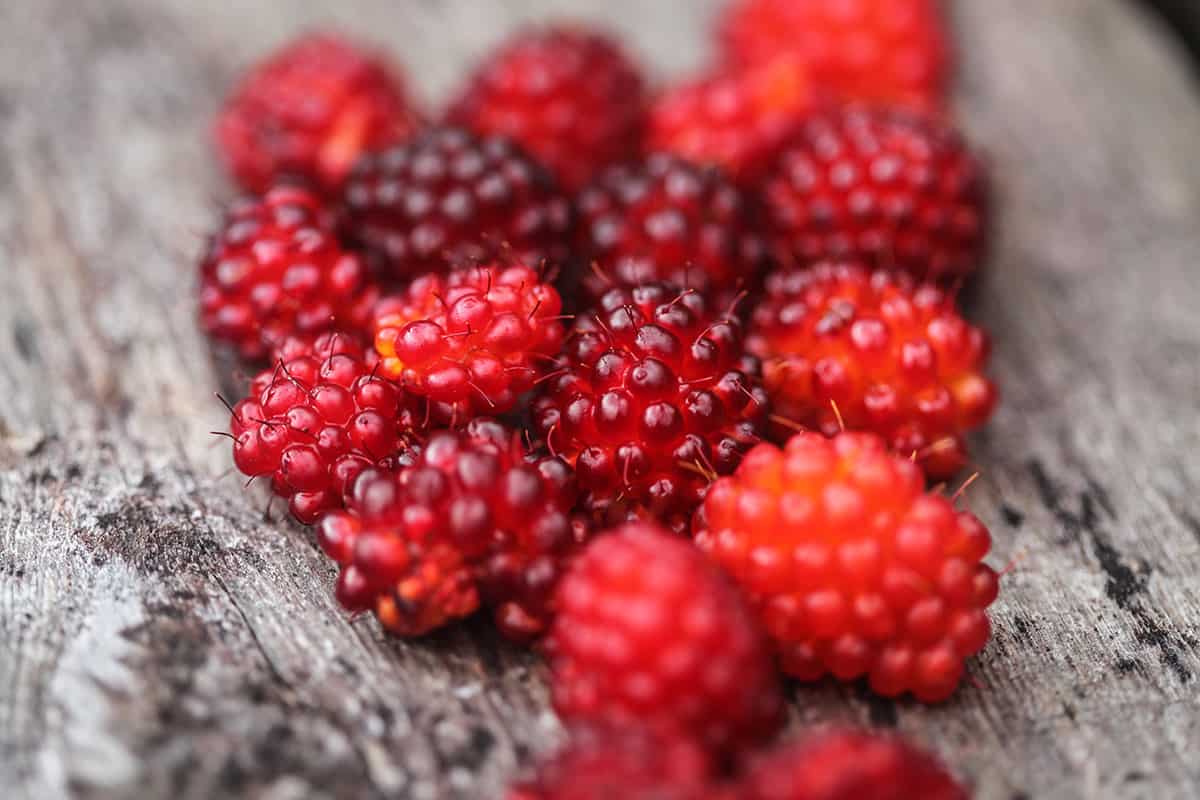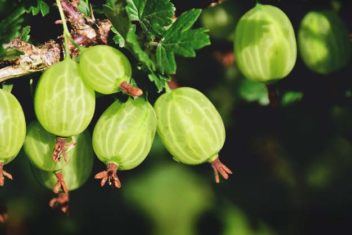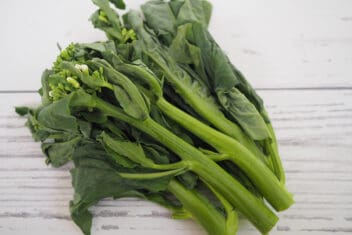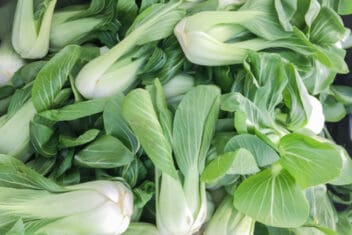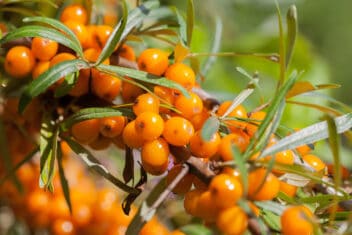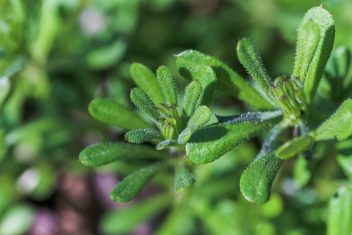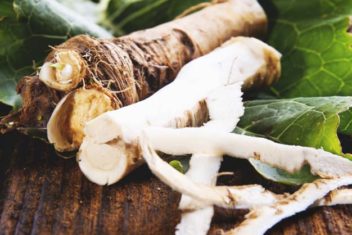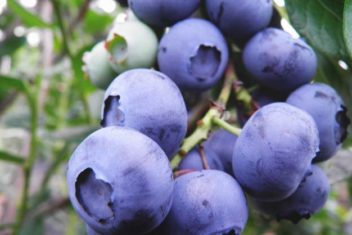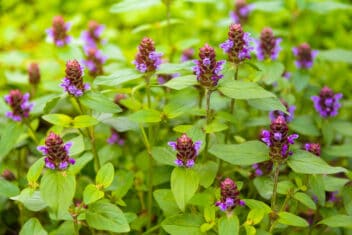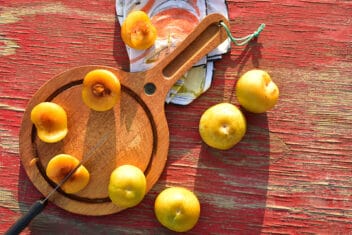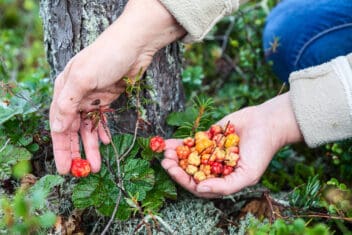Most people have never heard of salmonberries. Foragers love them, but you rarely see them in markets or growing in home gardens.
Salmonberry bushes are a member of the Rubus genus, related to other brambles you might recognize, such as raspberries and blackberries.
These plants are native along the west coast, growing wild from Alaska to California and inland to Idaho. Native Americans have traditionally eaten them raw or mixed with salmon dishes, which is where they got their name.
What are Salmonberries?
Anyone living in the USDA Hardiness Zones 5-9 with moist conditions can grow salmonberries without much trouble.
The shrubs reach up to six feet tall and produce leaves that measure one to three inches long. The flowers appear in the early spring, looking beautiful with purple-pink blossoms that are one-inch in diameter.
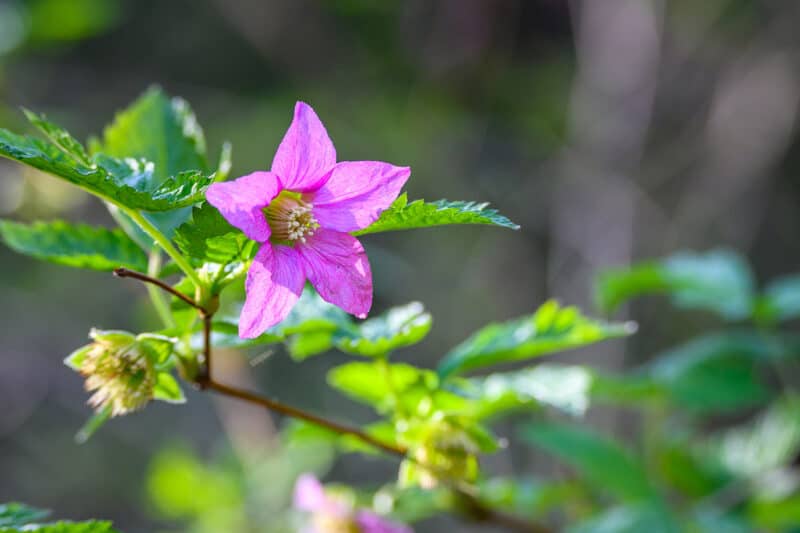
In most areas, salmonberries ripen between May and July. The berries are a glossy orange to red color with some yellow tints and are about the same size as raspberries.
As permaculture becomes more popular, more gardeners are growing salmonberries in their garden as perennial fruits. These Rubus brambles provide delicious berries that can be eaten fresh or cooked.
Planting Salmonberries in Your Garden
Growing salmonberries in your backyard gives you an opportunity for homegrown, delicious berries that many people will never even get a chance to try.
Here’s how to get started growing salmonberries at home.
Preparing the Soil for Salmonberries
Salmonberries like rich soil, so it’s best to apply a thick layer of compost before you plant these bushes. Compost provides most of the nutrients needed for these plants to grow quickly in the first year.
Performing a soil test is a good idea; it checks the pH range of the soil. Salmonberries are typically not considered fussy or picky about pH levels, but Rubus shrubs generally prefer neutral to slightly acidic soil. A range of 6.0 to 7.0 is perfect.
Amending the soil pH is easy. Lime increases the pH level while sulfur lowers it.
Picking the Right Area for Salmonberry Bushes
Salmonberries grow best when planted in moist places or wetlands, similar to where they grow in the wild. If you have a stream or pond in your backyard, salmonberry plants reduce erosion near the banks.
Make sure the plants receive full to partial shade. They can’t handle full sun.
Start with a Cutting from a Plant
The easiest way to plant salmonberries is to start with a cutting from an established plant. Head out into the wild and grab some from an existing plant. Just be sure to check and see if it’s legal in your area.
Cuttings need to be taken in the fall when the plant goes dormant. Remove a four to eight inches long branch with four or more buds present on each piece.
Remove leaves from the bottom half. Place each cutting into a container of potting soil or moist sand, ensuring there are two buds above the soil surface and two buds below the surface.
By spring, the roots will start to develop slowly, and it’ll be time to transplant the cutting into the garden in the fall. Yes, you have to wait an entire year to plant your cutting into your garden.
Planting Cuttings or Transplants
Once your cuttings are ready to be planted, here’s what you need to do.
Dig a hole in your selected place that is slightly deeper and twice as wide as the depth of the pot it’s growing inside. Put a shovel full of compost at the bottom of the hole, along with any soil amendments needed.
Do your best to mix the compost and amendments into the hole. Then, place the salmonberry seedling into the hole and fill it with soil. Press the soil around the base of the plant, which keeps the seedling firmly in place.
Water deeply to encourage root establishment and spread mulch around the base of your plant.
Caring for Salmonberry Bushes
The next part of growing salmonberries in your garden is learning how to care for these plants.
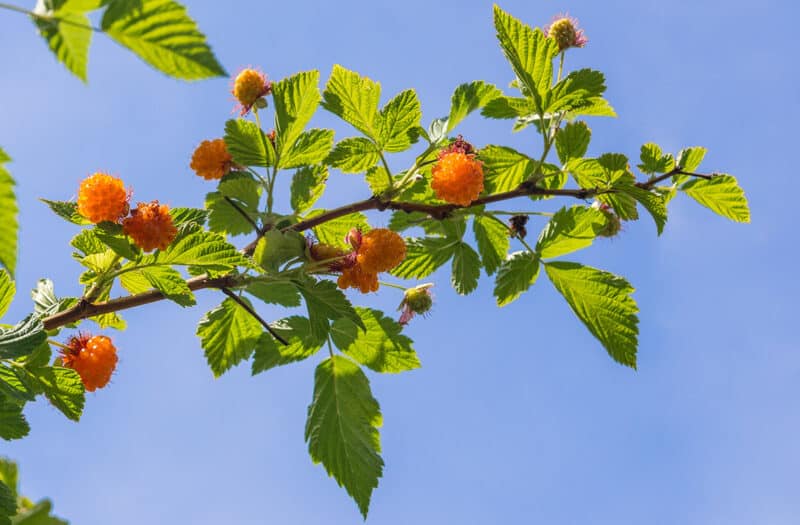
Keep the Plants Well-Watered
Salmonberry plants prefer plenty of moisture. Make sure you check the bushes every few days to ensure the soil is still moist.
When growing salmonberries, be sure to provide one inch of water weekly, especially when the berries set and ripen. Dry soil during this time can ruin your harvest.
Spread Mulch at the Base of the Plants
Applying mulch around the base of your salmonberry plants helps to retain much-needed moisture. At the same time, mulch helps to suppress weeds that compete for nutrients and regulate soil temperature.
Use a three-inch layer of mulch around your plants, but make sure to keep the mulch several inches away from the base of the seedling itself. Woodchips and pine needles are acceptable choices for mulch.
Apply Fertilizer
You should apply a slow-release fertilizer, such as a 10-10-10 or a 20-20-20, in the early spring before new growth appears. Apply the fertilizer in the second year if you applied compost before planting the cutting. If you didn’t apply compost first, fertilizer should be applied after planting.
Prune Regularly in the Winter
Salmonberries need to be pruned heavily in the winter to encourage new spring growth. Keep your plants six feet tall at a maximum height. These bushes will spread wide as they grow over the years.
After the berry season in the summer comes to an end, cut back the old stems at the plant’s base. Leave the new stems to grow in the spring. You can tell the old stems from the new because old canes are orange and smooth.
Possible Companion Plants for Salmonberries
Picking companion plants for salmonberries is a little tricky because these bushes typically grow in the wild with other native species. You’ll often find them in groups of multiple salmonberries or Rubus species together.
Here are some potential companion plants for salmonberries.
- Any Rubus species plant
- Lettuce
- Rhubarb
- Asparagus
- Chard
- Cilantro
- Mint
- Catnip
Pests & Diseases That Bother Salmonberries
Salmonberries are attacked by the same issues that bother many plants in the Rubus family.
Cane Blight
This fungal disease leads to purple to black cankers that form on wounds on young canes. Over time, these cankers grow, causing the plant to wilt and die. These infected canes will crack and break easily.
Preventing cane blight is easier than treating it. Plant in areas with good drainage and remove infected or damaged canes quickly. Fungicides aren’t particularly effective. In most cases, the plants need to be removed and destroyed.
Spur Blight
Spur blight is a fungal disease that causes purple-brown lesions to develop on the stem under the leaves or buds. These lesions are most common on the lower portion of the stem.
The disease might also cause brown triangular lesions to form on the edges of the leaves.
One of the problems with spur blight is that it’s capable of overwintering on diseased canes, and spreads through wind and rain. Getting rid of it is hard once established.
It thrives in moisture, so improving air circulation through pruning can help keep it away. Also, avoid applying too much fertilizer and water at the soil level, not on the leaves.
If the disease is severe, an application of a copper-based fungicide might help with the problem.
Weevils
The most common pest that bothers salmonberry plants is weevils. They leave behind large holes chewed in the leaves, along with stunted plant growth and development. Weevils also damage the roots.
The first step is to hand pick weevils from the plants, but the adult beetles are nocturnal and hide in the foliage throughout the day. That makes it a bit tricky to spot them.
Another choice is to use neem oil to try to get rid of weevils. For bad infestations, use chemical insecticides to take care of the problem.
Phytophthora Root Rot
If you notice canes that lack vigor and the symptoms are more obvious in the low-lying areas, you might have this soilborne disease. This root rot appears in wet soil conditions, causing the infected canes to develop a yellow, reddish, or orange tinge with scorched leaf edges.
Healthy canes rapidly decline and collapse within days. Inspection of the roots will show a brick red discoloration.
Unfortunately, it’s impossible to treat this root rot once introduced, which is why good sanitation is important. Plant your salmonberries in well-draining soil; raised beds help to decrease the risk of this problem.
Harvesting and Using Salmonberries
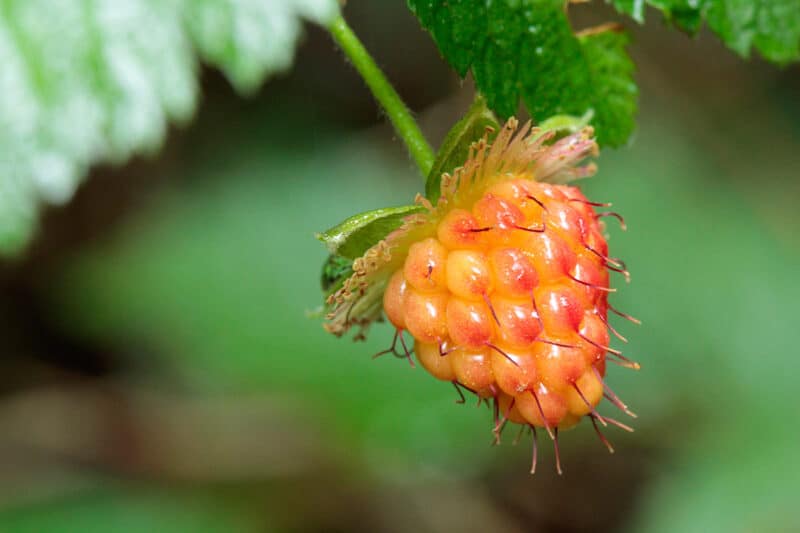
Harvest the berries as they start to ripen throughout the summer. It takes between two to three years after planting to receive a harvest from these plants. The tender shoots that appear in the early spring can be peeled and steamed, then added to soups like any other vegetable.
Salmonberries are one of the first berries that appear in the summer. You’ll know that they’re ready when you find pink-orange-red berries. Not sure if they’re ready? Take a bite!
These berries don’t have as strong of a flavor as other Rubus brambles, like blackberries, but their early ripening period provides fresh berries before many others.
Salmonberries are safe to eat raw; they can be frozen or turned into preserves and compotes. These berries don’t dehydrate well because they have a high water content.
